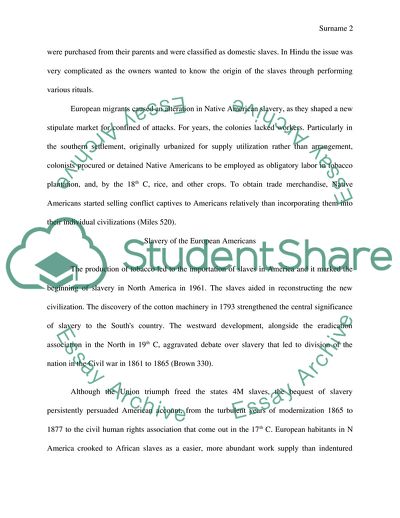Cite this document
(Slavery of the European Americans Literature review Example | Topics and Well Written Essays - 1500 words, n.d.)
Slavery of the European Americans Literature review Example | Topics and Well Written Essays - 1500 words. https://studentshare.org/history/1804279-windows-on-american-society
Slavery of the European Americans Literature review Example | Topics and Well Written Essays - 1500 words. https://studentshare.org/history/1804279-windows-on-american-society
(Slavery of the European Americans Literature Review Example | Topics and Well Written Essays - 1500 Words)
Slavery of the European Americans Literature Review Example | Topics and Well Written Essays - 1500 Words. https://studentshare.org/history/1804279-windows-on-american-society.
Slavery of the European Americans Literature Review Example | Topics and Well Written Essays - 1500 Words. https://studentshare.org/history/1804279-windows-on-american-society.
“Slavery of the European Americans Literature Review Example | Topics and Well Written Essays - 1500 Words”. https://studentshare.org/history/1804279-windows-on-american-society.


